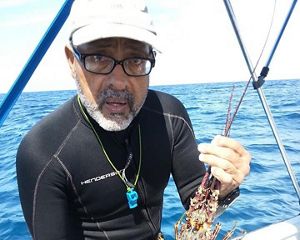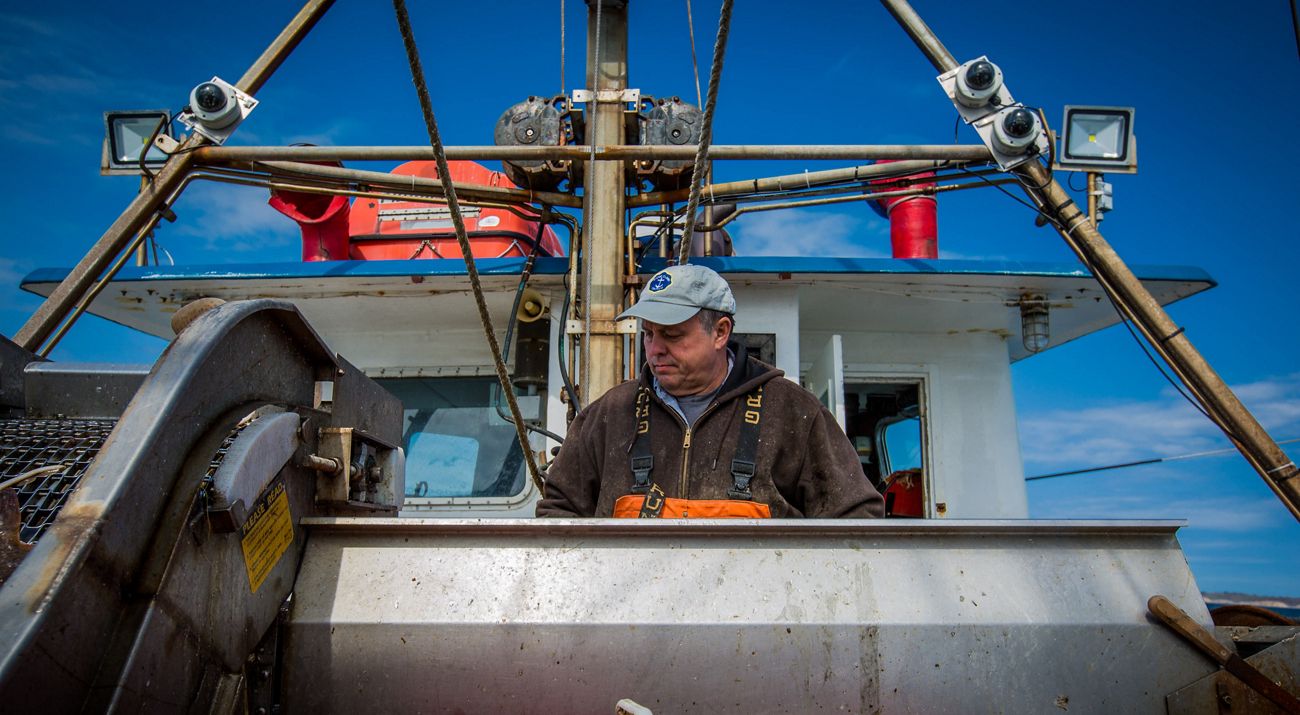
Fishing is more than a livelihood for Greg Walinski. It’s his passion.
“I wouldn’t want to do anything else. It’s really an exciting way to make a living,” says the long-time Cape Cod commercial fisherman.
Walinski harpoons blue fin tuna, some as large as 1,000 pounds, and he also fishes for dogfish, a small abundant shark that’s largely sold overseas.
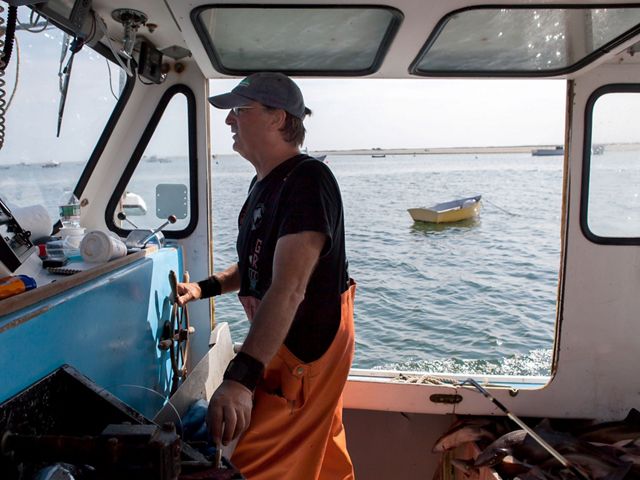
But for decades groundfish like cod and haddock were his bread and butter—until he had to give up groundfishing. The fish were becoming scarce, areas he fished were closed, quotas were slashed, and costs increased. For Walinksi, part of the problem was the expense of having onboard, human observers.
During the last decade, many fisheries, including the New England groundfish fishery, transitioned to “catch shares” management—an approach that can improve safety, profitability and flexibility but requires very precise catch accounting, typically achieved by deploying human observers aboard vessels.
But paying for human observers to monitor catches and discards can cost fishermen upwards of $700 a day. And accommodating an extra person on board is also a challenge because captains have to take on responsibility for another persons’ safety and well-being.
Quote: Randy Cushman
I have nothing to hide and plenty to prove. When the science says one thing and fishermen see another, the camera keeps everyone honest.
Electric Monitoring Provides Options
Many New England fishermen now have other options. They are using video cameras onboard their boats to collect critical information on catch and discards. This innovative technology—known as electronic monitoring or EM—provides fishermen more flexibility and managers with better data for making sound fisheries management decisions.
Regulators began testing cameras in New England’s groundfish fishery as a substitute for human observers in 2016. To date, 23 fishermen in Maine, New Hampshire, Massachusetts and Rhode Island have voluntarily installed cameras on their boats.

Nick Muto, a longtime Cape Cod fisherman, was an early participant. He admits he was initially concerned about data confidentiality and “Big Brother” looking over his shoulder all the time, but he volunteered to have cameras installed on his 35-foot boat, the Dawn T. in hopes that the EM cameras would alleviate the scheduling difficulties and safety worries of having onboard human observers.
The cameras run the entire time Muto and his crew are actively fishing, collecting video footage that documents fish handling processes, the amount and species of discards, and the area fished. When Muto returns to dock, the video footage is transmitted to a trained technician who reviews it to verify the discards reported in his logbook.
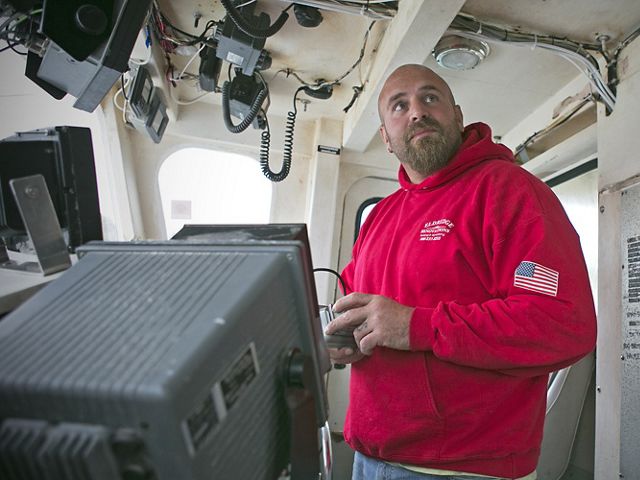
So far, Muto likes how the cameras are working. “There’s accountability for what I’m doing on the water,” he says. “I’m hopeful that it’s opening up opportunity for me.”
And opportunity is knocking. Regulators recently provided greater flexibility for fishermen using electronic monitoring. Now Muto can adapt to what he sees on the water and shift from groundfishing to fishing for blue fin tuna without returning to port and notifying regulators.
Helping Restore Trust
In New England, mistrust between fishermen and scientists is legendary. But electronic monitoring is shifting that dynamic.
Fourth-generation Maine fisherman Randy Cushman has had cameras running on his 45-foot trawler the Ella Christine since 2013. He sees EM as a way to bring his on-the-water observations into the science and management arena.
“I have nothing to hide and plenty to prove,” Cushman says. “When the science says one thing and fishermen see another, the camera keeps everyone honest.”

Chris McGuire, the marine program director for The Nature Conservancy’s Massachusetts chapter, explains that turning fishermen’s observations into hard data with video footage benefits everyone.
“EM creates a data set that both the scientists and boat captains can trust, providing space for constructive conversations about the issue,” says McGuire.
The use of EM systems will reduce uncertainty on catch estimates and incentivize discard reduction, which are key to improving the accuracy of assessments and rebuilding stocks.
In the fall of 2017, Greg Walinski returned to sea to pursue his passion—“longlining” for cod and haddock. This time, however, cameras rather than a person observed what he caught and discarded.
“EM shows everything, which, for my fishery, is a good thing,” says Walinski. “I’d like to continue with EM and feel like it should be expanded throughout the fleet because the video tells no lies.”
Dive Deeper into EM
-
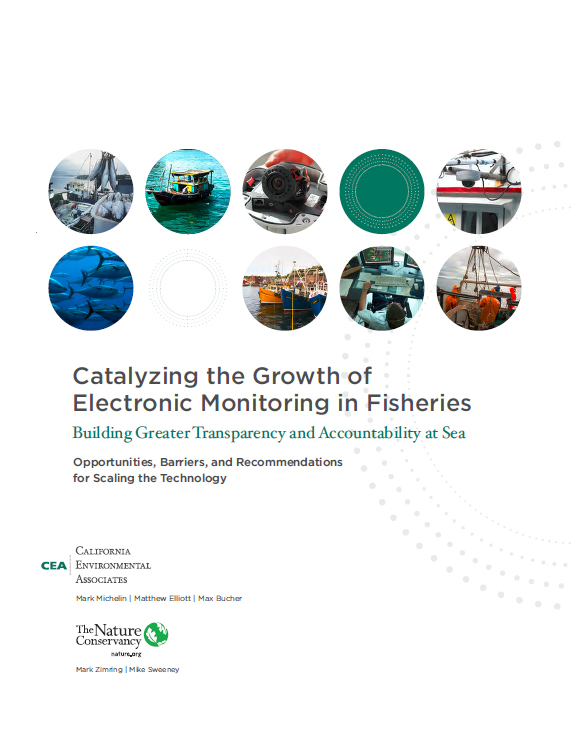
The Conservancy's 70-page paper provides detail and input from more than 40 electronic monitoring experts.
Download -

Electronic Monitoring Toolkit
Produced by The Conservancy and partners, this is an overview of questions and issues that may arise when governmental bodies and fishery managers are considering the development and implementation of electronic monitoring programs for fisheries.
Download


